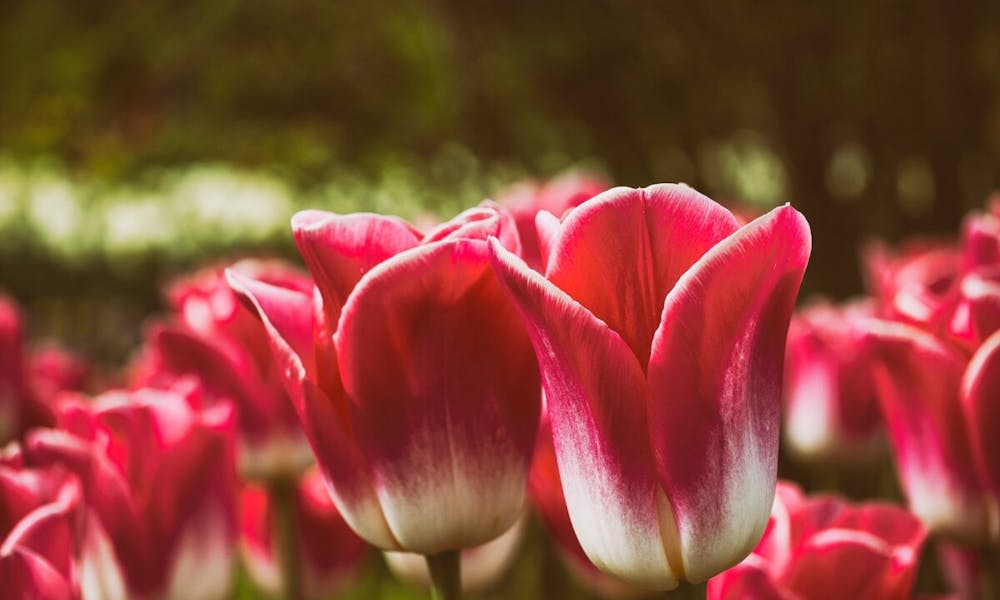MENU
Why Are My Tulips Opening Up So Much?

Tulips are iconic flowers known for their vibrant colors and elegant shape. Gardeners and flower enthusiasts eagerly anticipate the blooming season, eager to witness the beauty of tulips in full display. However, you may find yourself wondering why your tulips are opening up so much, displaying a wider bloom than expected. In this article, we will delve into the fascinating phenomenon of tulip blooms and explore the reasons behind their exaggerated opening. From environmental factors to genetic traits, we will provide insightful analysis and interesting information to help you understand and appreciate the unique nature of tulip blossoms.
The Intricate Anatomy of a Tulip Bloom
Before we explore the reasons behind tulips opening up extensively, let’s take a moment to appreciate the intricate anatomy of these stunning flowers. The structure of a tulip bloom consists of several essential components:
- Petals: Tulips typically have six petals that surround the central reproductive organs. These petals can vary in shape, color, and texture, adding to the diversity and allure of tulip varieties.
- Sepals: Sepals are leaf-like structures located at the base of the tulip bloom. They provide protection to the developing flower bud and eventually become the green outer covering of the flower.
- Stamens: The stamens are the male reproductive organs of the tulip. They consist of a slender filament topped with an anther that contains pollen.
- Pistil: The pistil is the female reproductive organ of the tulip. It consists of the stigma, style, and ovary. The stigma is located at the top of the pistil and serves as the landing platform for pollen. The style connects the stigma to the ovary, where the seeds develop.
Now that we have a basic understanding of tulip anatomy, let’s explore the factors that can contribute to tulips opening up extensively.
Environmental Factors: Light, Temperature, and Water
- Light: Adequate exposure to sunlight is crucial for tulip growth and development. Insufficient light can cause tulips to stretch or elongate, resulting in an exaggerated bloom. If your tulips are opening up extensively, it could be an indication that they are not receiving enough direct sunlight. Consider relocating them to a sunnier spot in your garden or providing supplemental lighting if growing indoors.
- Temperature: Temperature fluctuations can influence tulip growth and affect the way the blooms open. Cold temperatures can cause tulip petals to remain closed longer, resulting in a more compact appearance. Conversely, warmer temperatures can accelerate the blooming process and lead to wider openings. If you live in a region with fluctuating temperatures, you may notice variations in the extent of tulip bloom openings.
- Water: Proper hydration is essential for tulip growth and blooming. Inadequate water supply can result in stunted growth and restricted petal openings. Conversely, excessive water or waterlogged soil can cause tulips to become floppy and overly open. Maintaining a consistent watering schedule and ensuring proper drainage can help regulate water intake and prevent extreme bloom openings.
Genetic Factors: Tulip Varieties and Cultivars
The genetic makeup of tulips plays a significant role in determining the characteristics of their blooms, including the extent of petal openings. Different tulip varieties and cultivars have been selectively bred over the years, resulting in a wide range of shapes, sizes, and bloom behaviors.
Some tulip varieties are naturally inclined to have wider or more open blooms. For example, the Triumph tulip variety is known for its wide and cup-shaped blooms, while the Parrot tulip variety exhibits flamboyant and ruffled petals that often open more prominently. If you notice your tulips opening up extensively, it could be due to the inherent genetic traits of the particular variety or cultivar you have planted.
Growth and Development Factors: Maturity and Aging
As tulips progress through their growth and development stages, their blooms undergo changes. The opening of tulip blooms is influenced by their maturity and aging process.
When tulip buds first emerge, they are tightly closed, protecting the delicate petals within. As the buds mature and approach their peak blooming stage, they gradually open up, revealing the full splendor of their petals. Some tulips have a more pronounced and dramatic opening, while others exhibit a more subtle transition. If your tulips are opening up extensively, it may simply be a natural part of their growth and maturation process.
Conclusion
The phenomenon of tulips opening up extensively is a captivating aspect of these enchanting flowers. From environmental factors such as light, temperature, and water, to genetic traits and growth and development processes, various elements contribute to the extent of tulip bloom openings.
As a gardener or tulip enthusiast, understanding the factors at play can help you appreciate and anticipate the unique beauty of tulip blossoms. Whether your tulips open up extensively or exhibit more compact blooms, each variety and cultivar offers its own captivating charm.
So, the next time you gaze upon your tulips opening up, take a moment to reflect on the intricate interplay of environmental factors, genetic traits, and the natural growth and maturation of these remarkable flowers. Embrace the delightful surprises that nature brings and savor the ephemeral beauty of tulip blooms in all their diverse forms.

